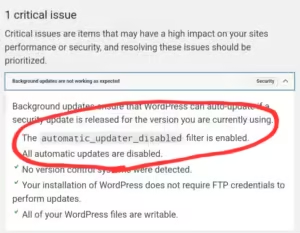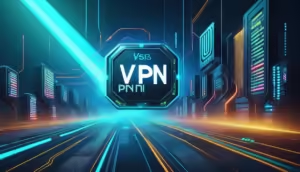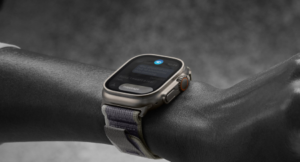
IoT Interview Questions for Freshers : A Comprehensive Guide
The Internet of Things (IoT) is revolutionizing industries and everyday life by connecting devices to the internet, enabling them to collect and exchange data. For freshers stepping into the IoT domain, preparing for interviews can be daunting due to the technical depth and broad application of IoT concepts. This article aims to simplify your preparation with key interview questions and answers tailored for freshers. These questions cover fundamental concepts, technical skills, and current trends in IoT.
1. What is IoT?
Answer:
IoT, or the Internet of Things, refers to a network of interconnected devices that can communicate and share data with each other over the internet. These devices range from everyday objects like smartphones and home appliances to industrial machines and sensors. The goal of IoT is to create a smarter, more efficient, and automated environment.
2. How does IoT work?
Answer:
IoT works through a combination of hardware (sensors, devices), connectivity (internet, communication protocols), and software (data processing, analytics). Sensors collect data from the environment, which is then transmitted via a network to a central system or cloud platform. This data is analyzed, and appropriate actions are taken based on the analysis.
3. What are the key components of an IoT system?
Answer:
The key components of an IoT system include:
- Sensors/Devices: Collect data from the environment.
- Connectivity: Facilitates communication between devices and the cloud (Wi-Fi, Bluetooth, Zigbee, etc.).
- Data Processing: Analyzes the collected data.
- User Interface: Allows users to interact with the system (mobile apps, dashboards).
- Actuators: Execute actions based on processed data.
4. Can you name some popular IoT applications?
Answer:
Popular IoT applications include:
- Smart Homes: Devices like smart thermostats, lights, and security systems.
- Healthcare: Remote monitoring and health tracking devices.
- Industrial IoT (IIoT): Predictive maintenance, supply chain optimization.
- Agriculture: Precision farming using soil moisture sensors, weather monitoring.
- Transportation: Fleet management, connected vehicles.
5. What are some common IoT communication protocols?
Answer:
Common IoT communication protocols include:
- Wi-Fi: For high-speed data transmission.
- Bluetooth Low Energy (BLE): For short-range, low-power communication.
- Zigbee: Used in smart home devices.
- MQTT (Message Queuing Telemetry Transport): Lightweight messaging protocol.
- CoAP (Constrained Application Protocol): Designed for low-power devices.
6. Explain the concept of edge computing in IoT.
Answer:
Edge computing refers to processing data near the data source (edge devices) rather than relying on a centralized cloud server. This reduces latency, saves bandwidth, and enhances data security. It is especially useful in applications requiring real-time data processing, such as autonomous vehicles and industrial automation.
7. What is a Digital Twin in IoT?
Answer:
A Digital Twin is a virtual replica of a physical object or system. It uses real-time data to simulate, analyze, and predict the behavior of the physical counterpart. This technology helps in optimizing performance, predicting failures, and improving maintenance strategies.
8. What are the main challenges facing IoT today?
Answer:
Key challenges include:
- Security and Privacy: Protecting data and devices from cyber threats.
- Interoperability: Ensuring different devices and platforms work together seamlessly.
- Scalability: Managing a large number of devices and data.
- Power Consumption: Prolonging battery life of IoT devices.
- Data Management: Efficiently processing and storing vast amounts of data.
9. How do you ensure the security of an IoT system?
Answer:
Ensuring IoT security involves multiple strategies:
- Encryption: Protecting data in transit and at rest.
- Authentication: Verifying the identity of devices and users.
- Firmware Updates: Regularly updating device firmware to patch vulnerabilities.
- Network Security: Implementing firewalls, intrusion detection systems.
- Physical Security: Protecting hardware from tampering.
10. What is MQTT, and why is it used in IoT?
Answer:
MQTT (Message Queuing Telemetry Transport) is a lightweight messaging protocol designed for low-bandwidth, high-latency, or unreliable networks. It is commonly used in IoT due to its efficiency and simplicity, making it ideal for connecting devices in constrained environments.
11. Explain the difference between IoT and IIoT.
Answer:
IoT (Internet of Things) generally refers to consumer applications, such as smart homes and wearables, focusing on convenience and automation. IIoT (Industrial Internet of Things) applies IoT technology in industrial settings, such as manufacturing and logistics, emphasizing reliability, scalability, and precision.
12. What are some IoT development platforms you are familiar with?
Answer:
Popular IoT development platforms include:
- Arduino: For simple, low-power projects.
- Raspberry Pi: For more complex applications requiring higher processing power.
- AWS IoT: Amazon’s cloud platform for building IoT applications.
- Microsoft Azure IoT: Microsoft’s cloud-based IoT suite.
- Google Cloud IoT: Google’s platform for IoT solutions.
13. What is the role of AI in IoT?
Answer:
AI enhances IoT by enabling devices to learn from data, make predictions, and automate decision-making. Applications include predictive maintenance, smart assistants, and personalized user experiences. AI algorithms process and analyze IoT data to provide insights and drive intelligent actions.
14. Describe a real-world IoT project you have worked on or studied.
Answer:
When discussing a real-world IoT project, highlight the problem it solved, the technologies used, and the outcome. For example, you might talk about a smart home automation system that used sensors and actuators to control lighting and temperature, improving energy efficiency and user comfort.
Conclusion
Preparing for an IoT interview involves understanding both the theoretical concepts and practical applications of IoT technology. By familiarizing yourself with these common interview questions, you can demonstrate your knowledge and readiness to tackle the challenges in the dynamic field of IoT. Focus on grasping the basics, staying updated with the latest trends, and gaining hands-on experience through projects and internships to excel in your IoT career.





